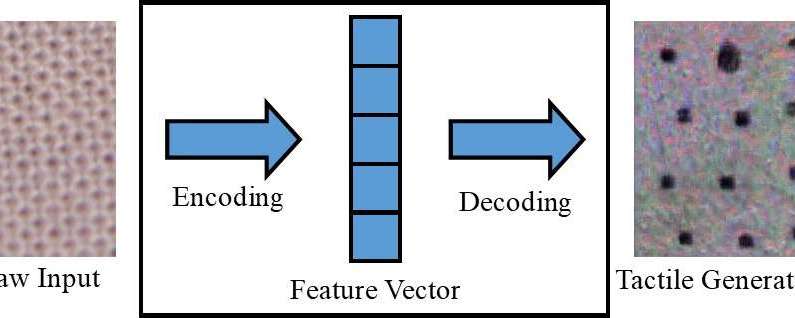Page 8144
Mar 5, 2019
Scientists use machine learning to identify high-performing solar materials
Posted by Quinn Sena in categories: engineering, robotics/AI, solar power, supercomputing, sustainability
Finding the best light-harvesting chemicals for use in solar cells can feel like searching for a needle in a haystack. Over the years, researchers have developed and tested thousands of different dyes and pigments to see how they absorb sunlight and convert it to electricity. Sorting through all of them requires an innovative approach.
Now, thanks to a study that combines the power of supercomputing with data science and experimental methods, researchers at the U.S. Department of Energy’s (DOE) Argonne National Laboratory and the University of Cambridge in England have developed a novel “design to device” approach to identify promising materials for dye-sensitized solar cells (DSSCs). DSSCs can be manufactured with low-cost, scalable techniques, allowing them to reach competitive performance-to-price ratios.
The team, led by Argonne materials scientist Jacqueline Cole, who is also head of the Molecular Engineering group at the University of Cambridge’s Cavendish Laboratory, used the Theta supercomputer at the Argonne Leadership Computing Facility (ALCF) to pinpoint five high-performing, low-cost dye materials from a pool of nearly 10,000 candidates for fabrication and device testing. The ALCF is a DOE Office of Science User Facility.
Continue reading “Scientists use machine learning to identify high-performing solar materials” »
Mar 5, 2019
Researchers harness mysterious Casimir force for tiny devices
Posted by Quinn Sena in categories: computing, quantum physics
Circa 2017
Getting something from nothing sounds like a good deal, so for years scientists have been trying to exploit the tiny amount of energy that arises when objects are brought very close together. It’s a source of energy so obscure it was once derided as a fanciful source of “perpetual motion.” Now, a research team including Princeton scientists has found a way to harness a mysterious force of repulsion, which is one aspect of that force.
This energy, predicted seven decades ago by the Dutch scientist Hendrik Casimir, arises from quantum effects and can be seen experimentally by placing two opposing plates very close to each other in a vacuum. At close range, the plates repel each other, which could be useful to certain technologies. Until recently, however, harnessing this “Casimir force” to do anything useful seemed impossible.
Continue reading “Researchers harness mysterious Casimir force for tiny devices” »
Mar 5, 2019
Researchers Are Training AI to Survive In This MMO
Posted by Quinn Sena in category: robotics/AI
In OpenAI’s ‘Neural MMO,’ artificially intelligent agents compete to survive, and learn new skills along the way.
Circa 2018
Scientists have attributed the flying behaviour of these wingless arthropods to ‘ballooning’, where spiders can be carried thousands of miles by releasing trails of silk that propel them up and out on the wind.
However, the fact that ballooning has been observed when there is no wind to speak of, when skies are overcast and even in rainy conditions, raises the question: how do spiders take off with low levels of aerodynamic drag?
Biologists from the University of Bristol believe they have found the answer.
Mar 5, 2019
The people in Russia buying ‘immortality’
Posted by Paul Battista in categories: life extension, neuroscience
After Anton Zeldin’s wife was involved in a fatal car accident, he chose to have her brain frozen with the hope that she can one day be brought back to life. Video Journalist: Irina Sedunova.
Mar 5, 2019
China announces the mass production of solid-state batteries
Posted by Quinn Sena in category: futurism
Although there are still hurdles for the production of the successor to the lithium-ion batteries according to experts, a Chinese start-up has allegedly succeeded in producing solid-state batteries.
Mar 5, 2019
Generating cross-modal sensory data for robotic visual-tactile perception
Posted by Quinn Sena in category: robotics/AI
Perceiving an object only visually (e.g. on a screen) or only by touching it, can sometimes limit what we are able to infer about it. Human beings, however, have the innate ability to integrate visual and tactile stimuli, leveraging whatever sensory data is available to complete their daily tasks.
Researchers at the University of Liverpool have recently proposed a new framework to generate cross-modal sensory data, which could help to replicate both visual and tactile information in situations in which one of the two is not directly accessible. Their framework could, for instance, allow people to perceive objects on a screen (e.g. clothing items on e-commerce sites) both visually and tactually.
“In our daily experience, we can cognitively create a visualization of an object based on a tactile response, or a tactile response from viewing a surface’s texture,” Dr. Shan Luo, one of the researchers who carried out the study, told TechXplore. “This perceptual phenomenon, called synesthesia, in which the stimulation of one sense causes an involuntary reaction in one or more of the other senses, can be employed to make up an inaccessible sense. For instance, when one grasps an object, our vision will be obstructed by the hand, but a touch response will be generated to ‘see’ the corresponding features.”
Continue reading “Generating cross-modal sensory data for robotic visual-tactile perception” »
Mar 5, 2019
First scalable graphene yarns for wearable textiles produced
Posted by Quinn Sena in categories: particle physics, wearables
A team of researchers led by Dr. Nazmul Karim and Prof Sir Kostya Novoselov at The University of Manchester have developed a method to produce scalable graphene-based yarn.
Multi-functional wearable e-textiles have been a focus of much attention due to their great potential for healthcare, sportswear, fitness and aerospace applications.
Graphene has been considered a potentially good material for these types of applications due to its high conductivity, and flexibility. Every atom in graphene is exposed to its environment allowing it to sense changes in its surroundings, making it an ideal material for sensors.
Continue reading “First scalable graphene yarns for wearable textiles produced” »
Mar 5, 2019
Chemists find method to replace hydrogen with fluorine in organic molecules
Posted by Caycee Dee Neely in category: biotech/medical
Fluorocarbon based life? Could be possible. Wonder where this will go.
Chemists have now reported a facile method for the replacement of hydrogen with fluorine in important drug molecules. This new discovery enables the fine-tuning of existing (and potential new) pharmaceuticals to endow them with improved pharmacological properties.
















